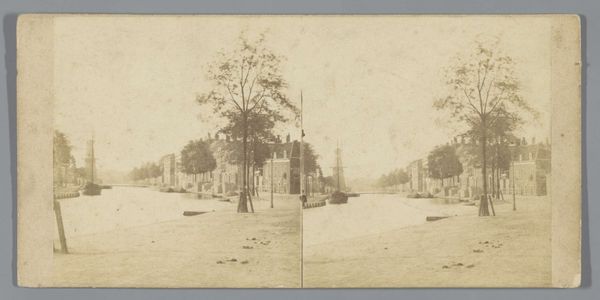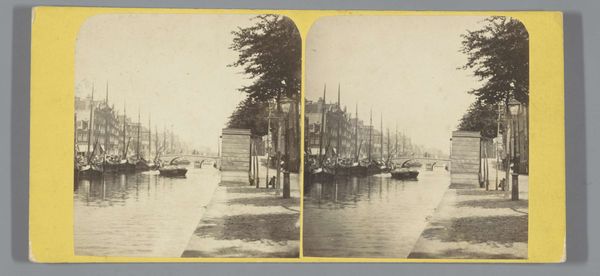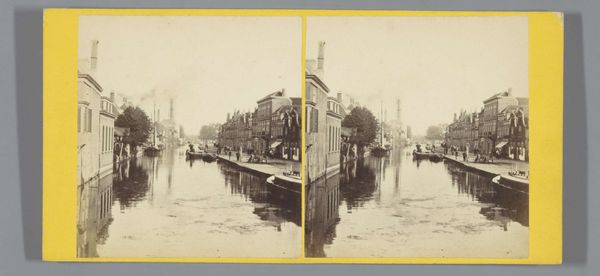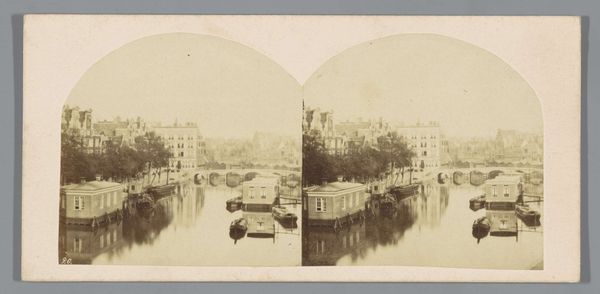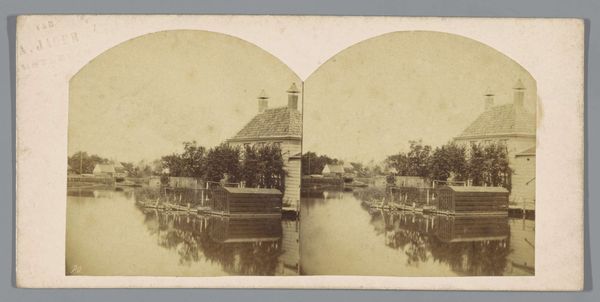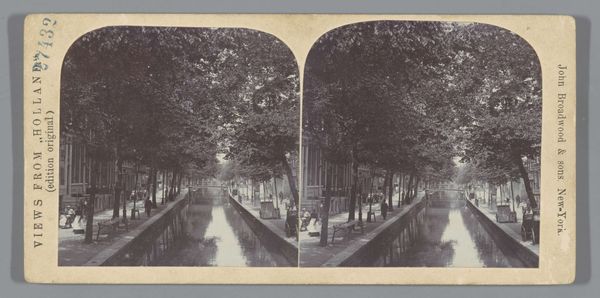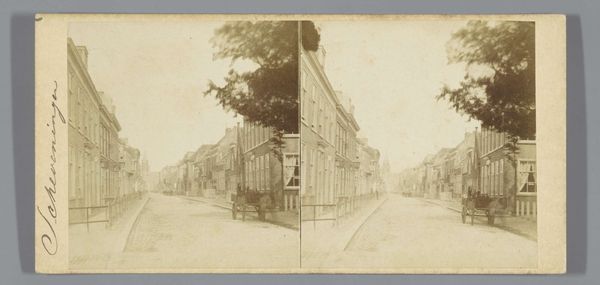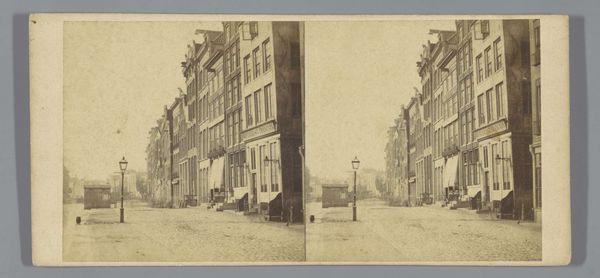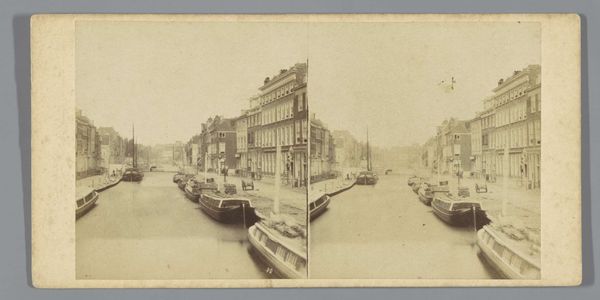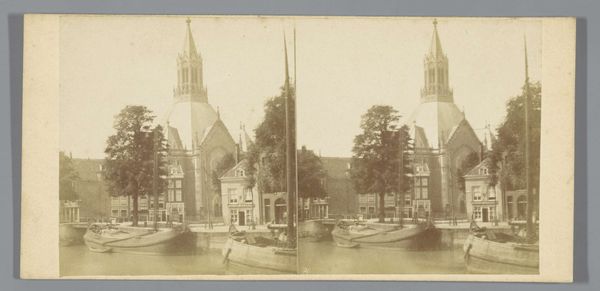
print, photography, gelatin-silver-print
# print
#
landscape
#
photography
#
gelatin-silver-print
#
cityscape
#
realism
Dimensions: height 82 mm, width 174 mm
Copyright: Rijks Museum: Open Domain
Pieter Oosterhuis created this stereograph of the Coolsingel in Rotterdam using an early photographic process. In 19th-century Netherlands, the rise of photography coincided with a period of significant social and urban change. Rotterdam, a vital port city, was experiencing rapid growth and industrialization. Oosterhuis's photograph captures the Coolsingel, a canal that was a central artery for trade and transportation, lined by buildings representing commerce and civic life. This image speaks to the intersection of technological advancement and urban development, highlighting the changing landscape of the city. By creating a stereograph, a double image that gives the illusion of depth when viewed through a special device, Oosterhuis catered to a growing interest in realism and documentation. The popularity of stereographs also reflects the era's fascination with modernity and progress. The image's historical value lies in its ability to document the city's past, reminding us that the meaning of art is often found in its social and institutional context. To understand this artwork better, we can consult historical archives, urban development plans, and accounts of daily life in 19th-century Rotterdam.
Comments
No comments
Be the first to comment and join the conversation on the ultimate creative platform.
